Jun Zou
A Novel Tree Model-based DNN to Achieve a High-Resolution DOA Estimation via Massive MIMO receive array
Nov 30, 2023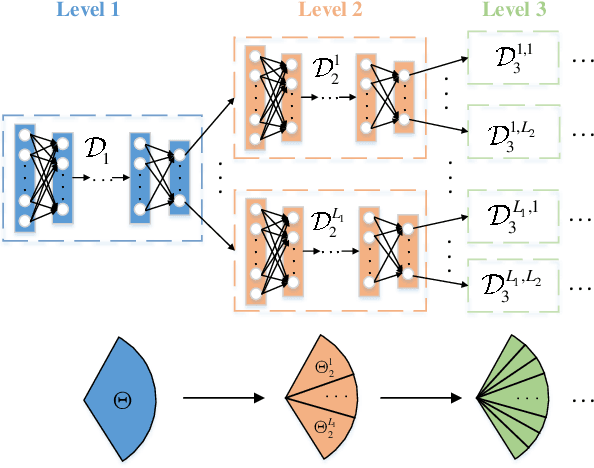
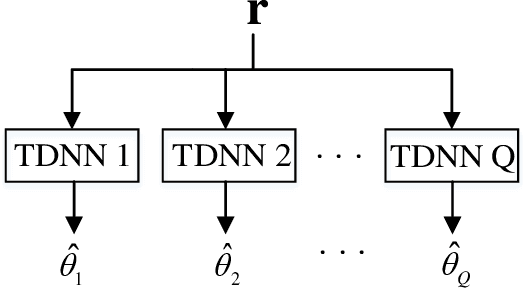
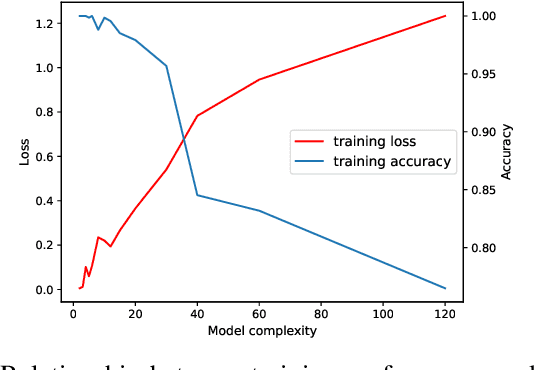
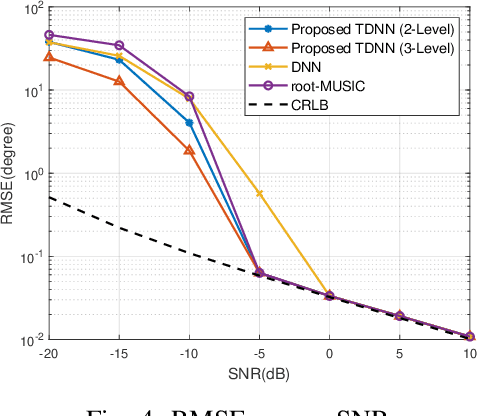
Abstract:To satisfy the high-resolution requirements of direction-of-arrival (DOA) estimation, conventional deep neural network (DNN)-based methods using grid idea need to significantly increase the number of output classifications and also produce a huge high model complexity. To address this problem, a multi-level tree-based DNN model (TDNN) is proposed as an alternative, where each level takes small-scale multi-layer neural networks (MLNNs) as nodes to divide the target angular interval into multiple sub-intervals, and each output class is associated to a MLNN at the next level. Then the number of MLNNs is gradually increasing from the first level to the last level, and so increasing the depth of tree will dramatically raise the number of output classes to improve the estimation accuracy. More importantly, this network is extended to make a multi-emitter DOA estimation. Simulation results show that the proposed TDNN performs much better than conventional DNN and root-MUSIC at extremely low signal-to-noise ratio (SNR), and can achieve Cramer-Rao lower bound (CRLB). Additionally, in the multi-emitter scenario, the proposed Q-TDNN has also made a substantial performance enhancement over DNN and Root-MUSIC, and this gain grows as the number of emitters increases.
Calibration System and Algorithm Design for a Soft Hinged Micro Scanning Mirror with a Triaxial Hall Effect Sensor
Nov 24, 2023



Abstract:Micro scanning mirrors (MSM) extend the range and field of view of LiDARs, medical imaging devices, and laser projectors. However, a new class of soft-hinged MSMs contains out-of-plane translation in addition to the 2 degree-of-freedom rotations, which presents a cabliration challenge. We report a new calibration system and algorithm design to address the challenge. In the calibration system, a new low-cost calibration rig design employs a minimal 2-laser beam approach. The new new algorithm builds on the reflection principle and an optimization approach to precisely measure MSM poses. To establish the mapping between Hall sensor readings and MSM poses, we propose a self-synchronizing periodicity-based model fitting calibration approach. We achieve an MSM poses estimation accuracy of 0.020{\deg} with a standard deviation of 0.011{\deg}.
A Fingertip Sensor and Algorithms for Pre-touch Distance Ranging and Material Detection in Robotic Grasping
Nov 17, 2023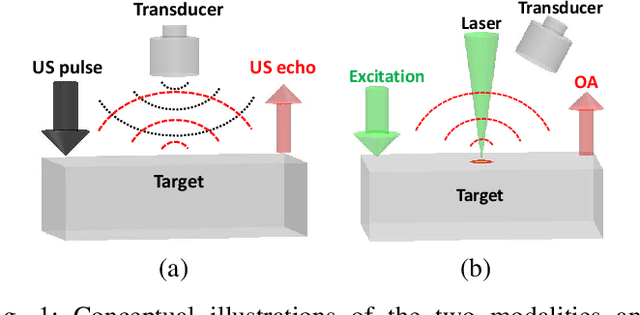
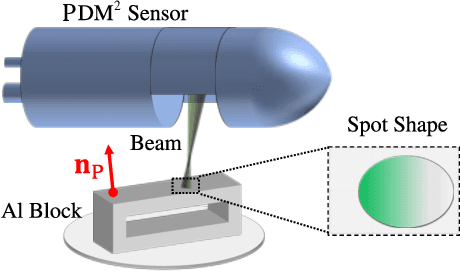
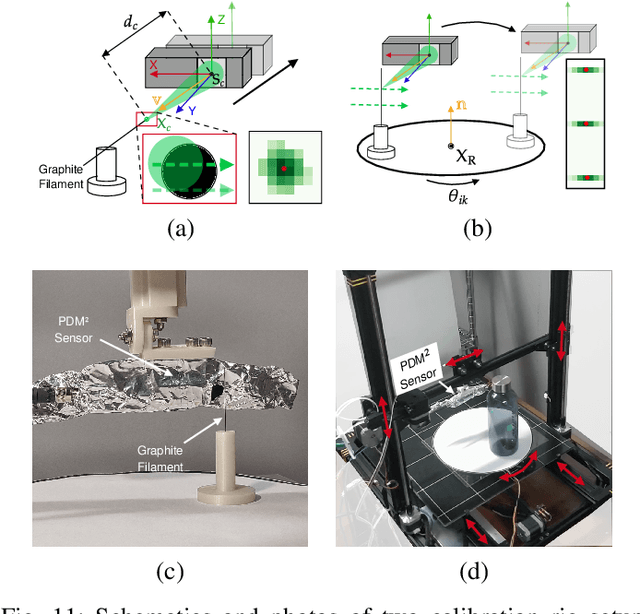
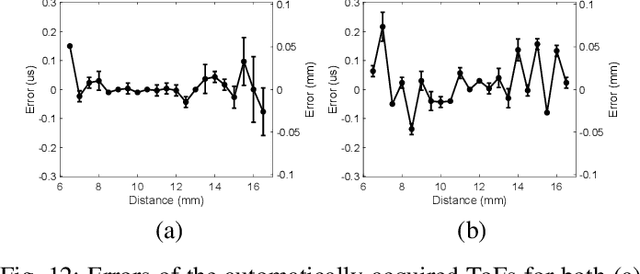
Abstract:To enhance robotic grasping capabilities, we are developing new contactless fingertip sensors to measure distance in close proximity and simultaneously detect the type of material and the interior structure. These sensors are referred to as pre-touch dual-modal and dual-mechanism (PDM$^2$) sensors, and they operate using both pulse-echo ultrasound (US) and optoacoustic (OA) modalities. We present the design of a PDM$^2$ sensor that utilizes a pulsed laser beam and a customized ultrasound transceiver with a wide acoustic bandwidth for ranging and sensing. Both US and OA signals are collected simultaneously, triggered by the same laser pulse. To validate our design, we have fabricated a prototype of the PDM$^2$ sensor and integrated it into an object scanning system. We have also developed algorithms to enable the sensor, including time-of-flight (ToF) auto estimation, ranging rectification, sensor and system calibration, distance ranging, material/structure detection, and object contour detection and reconstruction. The experimental results demonstrate that the new PDM$^2$ sensor and its algorithms effectively enable the object scanning system to achieve satisfactory ranging and contour reconstruction performances, along with satisfying material/structure detection capabilities. In conclusion, the PDM$^2$ sensor offers a practical and powerful solution to improve grasping of unknown objects with the robotic gripper by providing advanced perception capabilities.
On the Approximation of Bi-Lipschitz Maps by Invertible Neural Networks
Aug 18, 2023



Abstract:Invertible neural networks (INNs) represent an important class of deep neural network architectures that have been widely used in several applications. The universal approximation properties of INNs have also been established recently. However, the approximation rate of INNs is largely missing. In this work, we provide an analysis of the capacity of a class of coupling-based INNs to approximate bi-Lipschitz continuous mappings on a compact domain, and the result shows that it can well approximate both forward and inverse maps simultaneously. Furthermore, we develop an approach for approximating bi-Lipschitz maps on infinite-dimensional spaces that simultaneously approximate the forward and inverse maps, by combining model reduction with principal component analysis and INNs for approximating the reduced map, and we analyze the overall approximation error of the approach. Preliminary numerical results show the feasibility of the approach for approximating the solution operator for parameterized second-order elliptic problems.
A Direct Sampling-Based Deep Learning Approach for Inverse Medium Scattering Problems
Apr 29, 2023Abstract:In this work, we focus on the inverse medium scattering problem (IMSP), which aims to recover unknown scatterers based on measured scattered data. Motivated by the efficient direct sampling method (DSM) introduced in [23], we propose a novel direct sampling-based deep learning approach (DSM-DL)for reconstructing inhomogeneous scatterers. In particular, we use the U-Net neural network to learn the relation between the index functions and the true contrasts. Our proposed DSM-DL is computationally efficient, robust to noise, easy to implement, and able to naturally incorporate multiple measured data to achieve high-quality reconstructions. Some representative tests are carried out with varying numbers of incident waves and different noise levels to evaluate the performance of the proposed method. The results demonstrate the promising benefits of combining deep learning techniques with the DSM for IMSP.
Performance Analysis of Wireless Network Aided by Discrete-Phase-Shifter IRS
Apr 13, 2022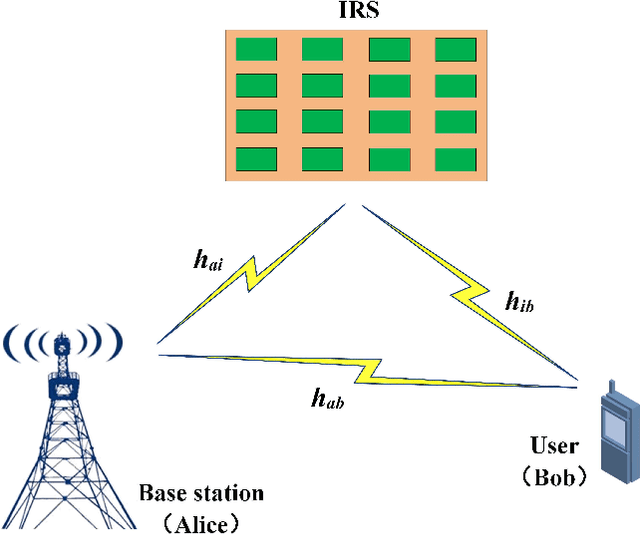
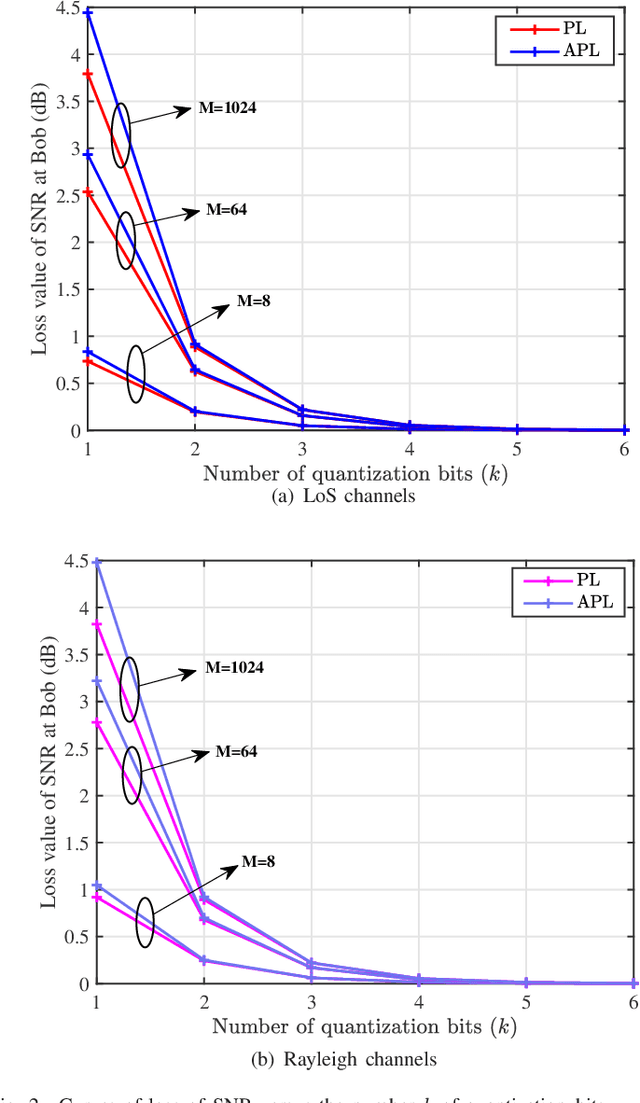
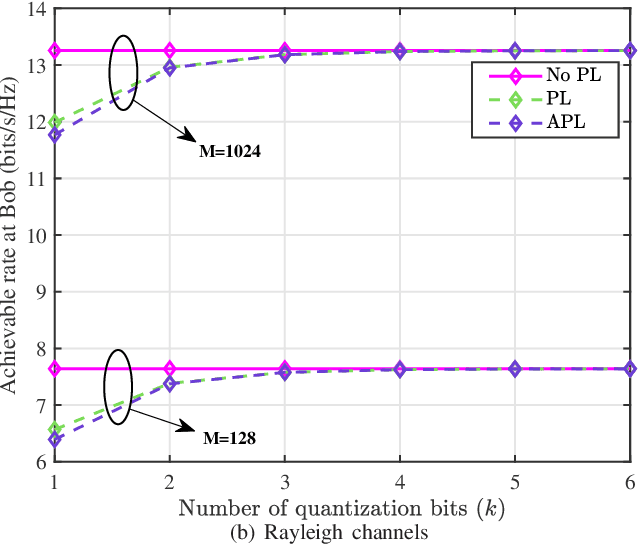
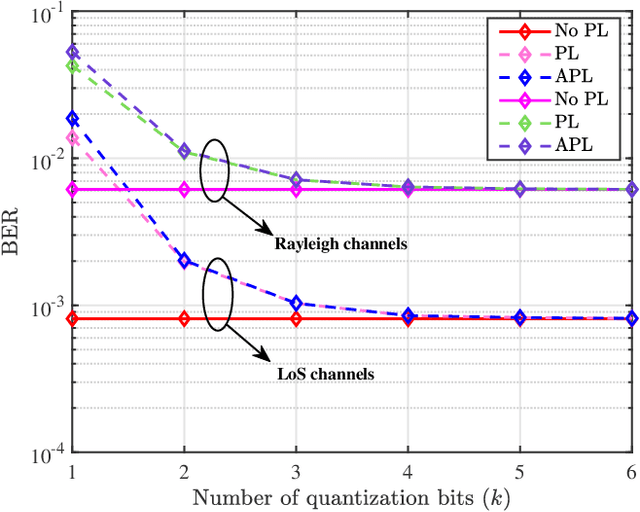
Abstract:Discrete phase shifters of intelligent reflecting surface (IRS) generates phase quantization error (QE) and degrades the receive performance at the receiver. To make an analysis of the performance loss caused by IRS with phase QE, based on the law of large numbers, the closed-form expressions of signal-to-noise ratio (SNR) performance loss (PL), achievable rate (AR), and bit error rate (BER) are successively derived under line-of-sight (LoS) channels and Rayleigh channels. Moreover, based on the Taylor series expansion, the approximate simple closed form of PL of IRS with approximate QE is also given. The simulation results show that the performance losses of SNR and AR decrease as the number of quantization bits increase, while they gradually increase with the number of IRS phase shifter elements increase. Regardless of LoS channels or Rayleigh channels, when the number of quantization bits is larger than or equal to 3, the performance losses of SNR and AR are less than 0.23dB and 0.08bits/s/Hz, respectively, and the BER performance degradation is trivial. In particular, the performance loss difference between IRS with QE and IRS with approximate QE is negligible when the number of quantization bits is not less than 2.
Fast Ambiguous DOA Elimination Method of DOA Measurement for Hybrid Massive MIMO Receiver
May 14, 2021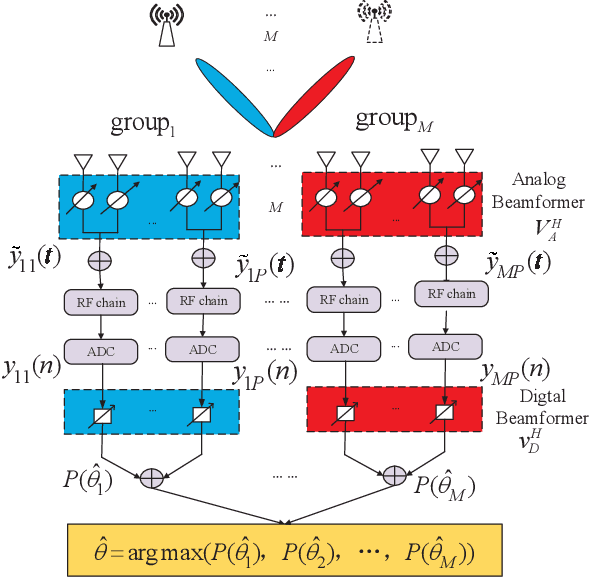

Abstract:DOA estimation for massive multiple-input multiple-output (MIMO) system can provide ultra-high-resolution angle estimation. However, due to the high computational complexity and cost of all digital MIMO systems, a hybrid analog digital (HAD) structure MIMO was proposed. In this paper, a fast ambiguous phase elimination method is proposed to solve the problem of direction-finding ambiguity caused by the HAD MIMO. Only two-data-blocks are used to realize DOA estimation. Simulation results show that the proposed method can greatly reduce the estimation delay with a slight performance loss.
 Add to Chrome
Add to Chrome Add to Firefox
Add to Firefox Add to Edge
Add to Edge